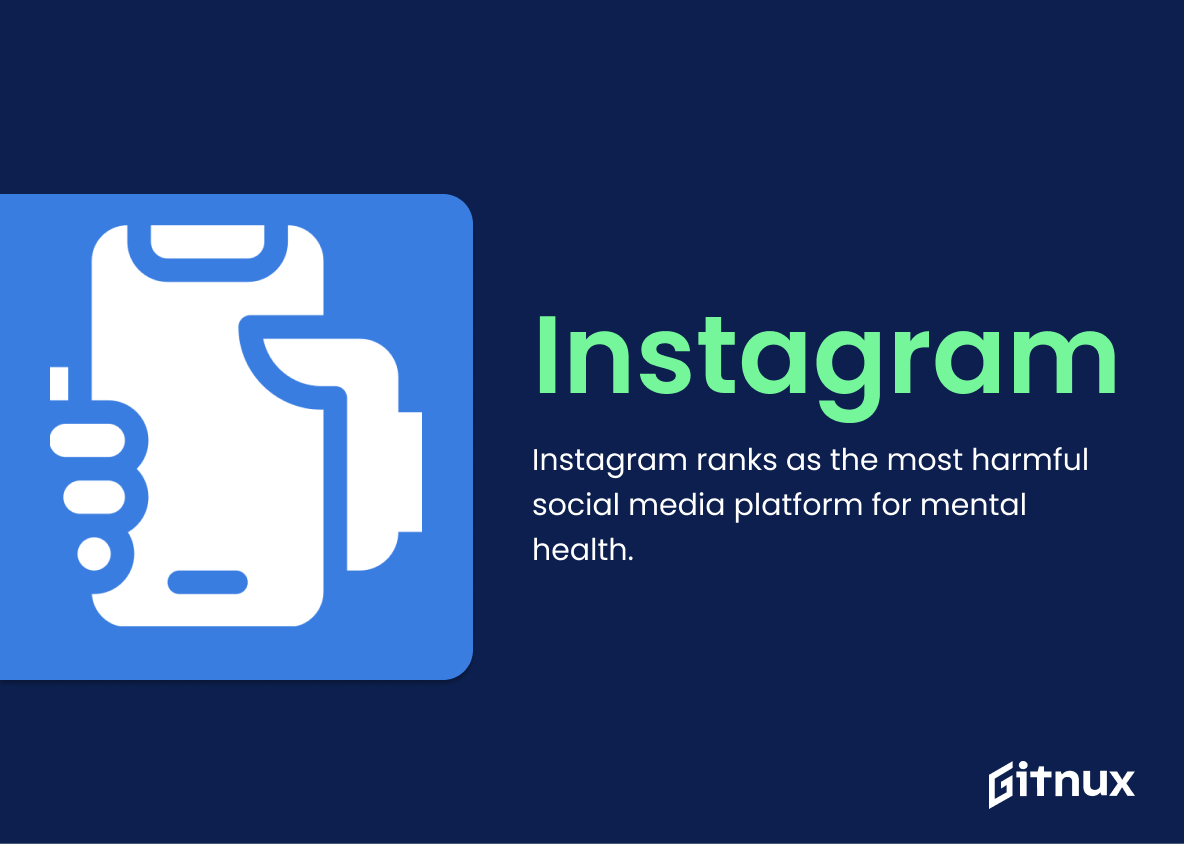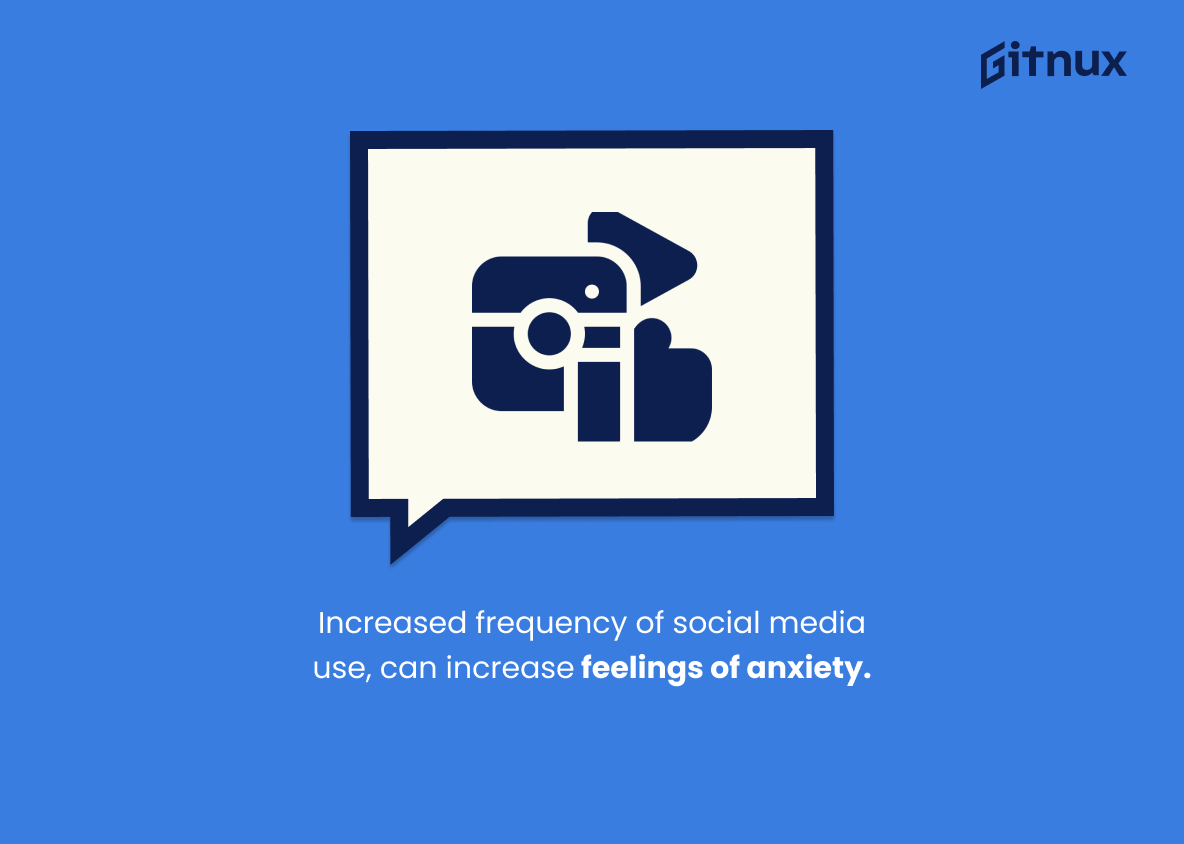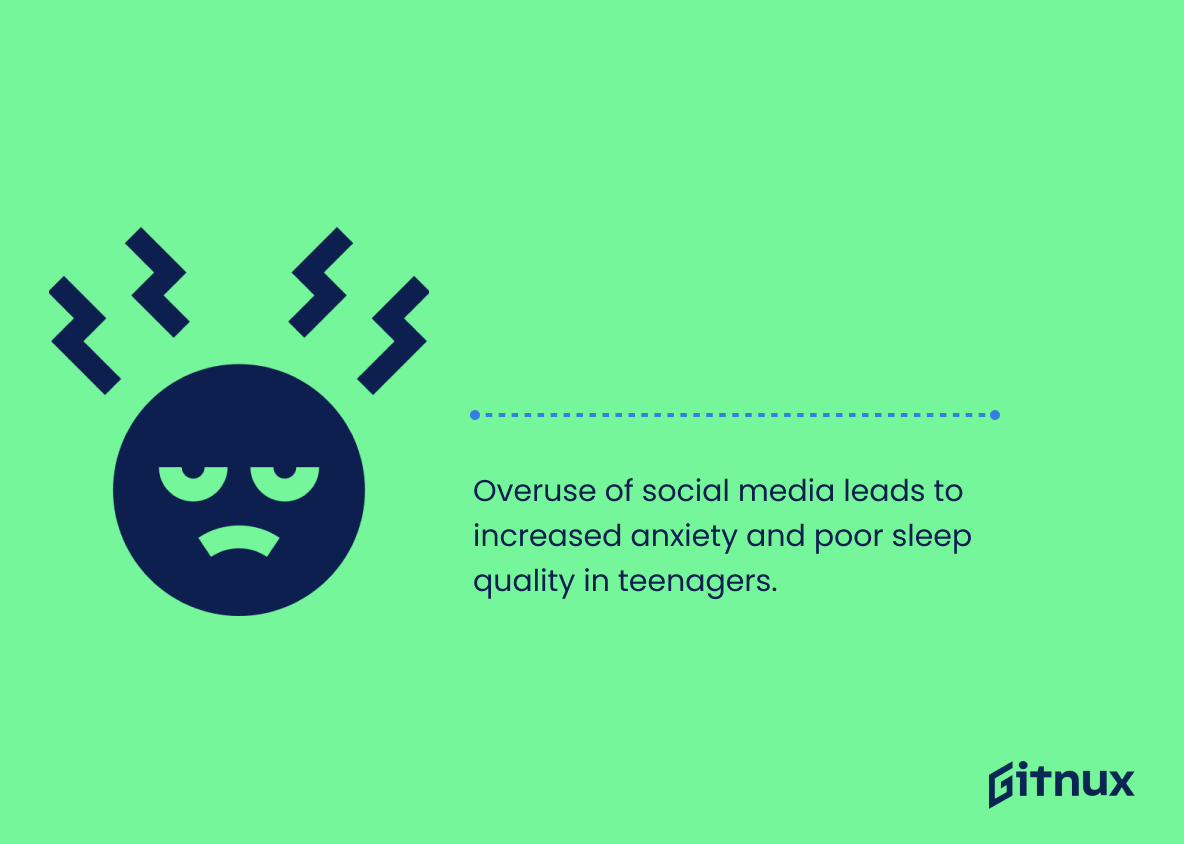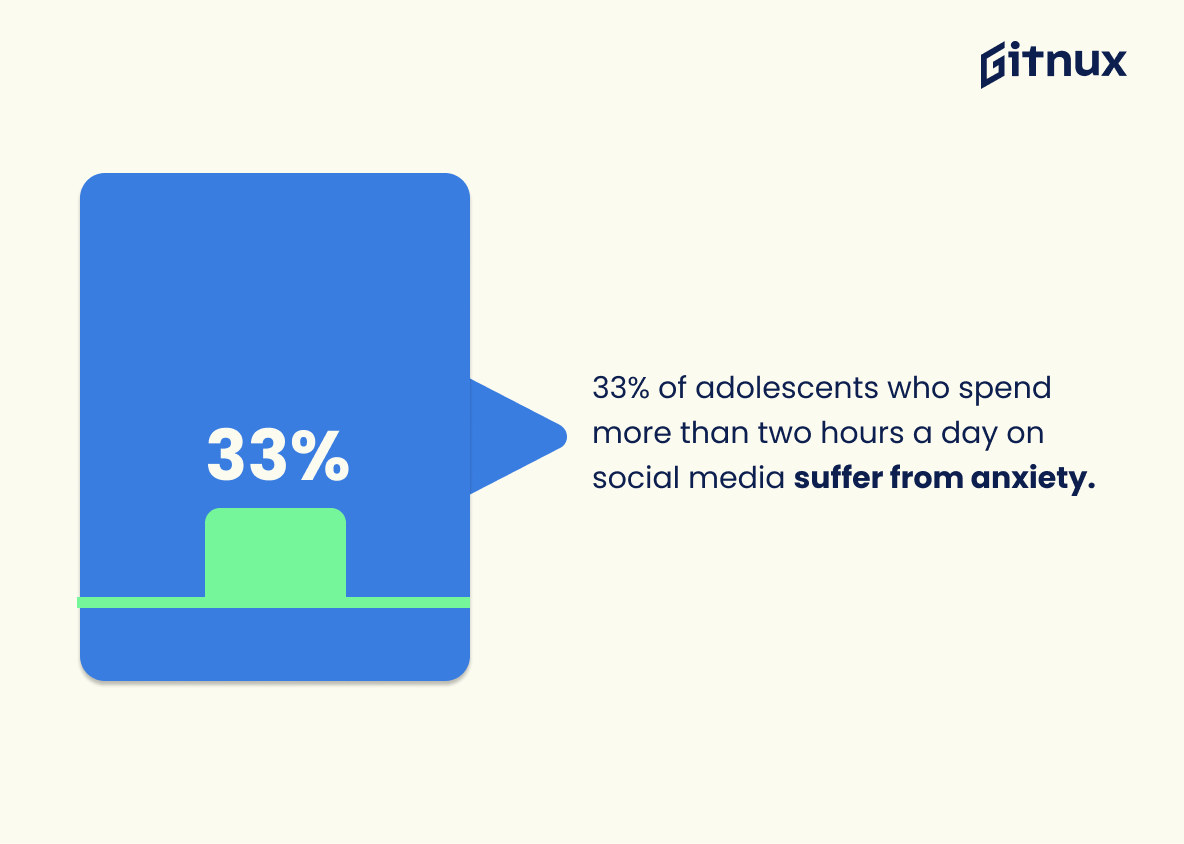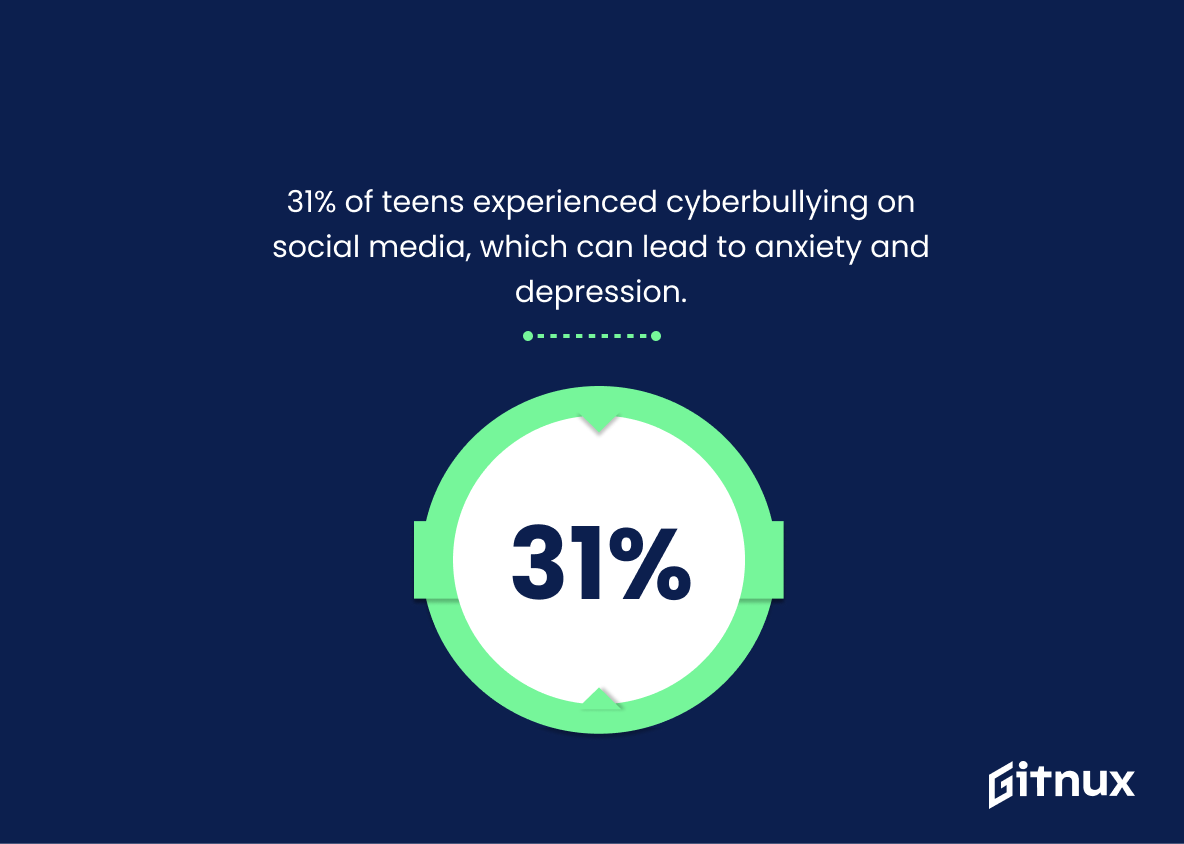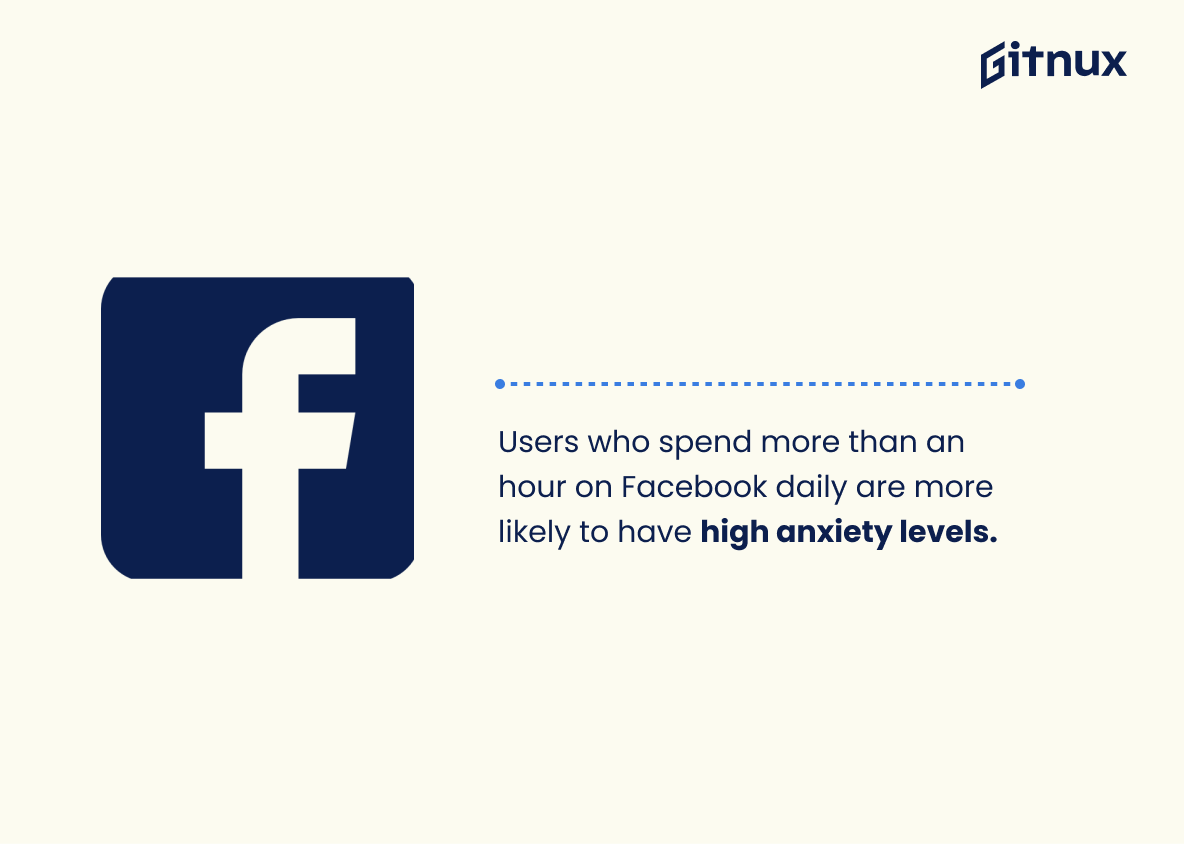In today’s digital era, social media platforms are no longer just tools for connecting and sharing; they have emerged as a new arena for mental health concerns. The instant gratification, constant comparison, and need for approval that these platforms foster can lead to heightened levels of anxiety. Through this blog post, we delve deep into the world of social media and its stark relationship with anxiety. We’ll present you with comprehensive statistics that shed light on this prevailing issue, pointing to the surprising facts and figures that underline the profound impact of social media on our mental health. Let’s navigate this complex confluence of technology and psychology together, illuminating often-overlooked factors contributing to the anxiety epidemic in our society.
The Latest Social Media And Anxiety Statistics Unveiled
According to a survey by the Royal Society for Public Health in the UK, Instagram is the worst social media network for mental health and wellbeing. It is associated with high levels of anxiety, depression, bullying and FOMO (“fear of missing out”).
Drawing from the reservoir of data by the Royal Society for Public Health in the UK, an eye-opening revelation traces the formidable roots of anxiety, depression, bullying and the so-called FOMO (fear of missing out), back to their engagement with Instagram. Undeniably, this narrative transports us to the heart of the discourse on Social Media and Anxiety Statistics, serving as a beacon illuminating the darker corners of social media impact on mental well-being. It unravels how Instagram, a popular social network platform, is potentially an arena where mental health battles are fought, confronting us with the urgent need for comprehensive strategies that address this alarming trend. This statistic not only strikes a chord but puts into perspective the gravity and extent of the issue, acting as a catalyst for driving further research, awareness, and intervention efforts.
A study from the University of Pittsburgh School of Medicine reported that checking social media often, termed increased frequency of social media use, can significantly increase feelings of anxiety.
Weaving this statistic into the fabric of a blog post on Social Media and Anxiety Statistics not only enhances the credibility of the narrative but also lends illumination to the connection between these two contemporary phenomena. To contextualize, the study from the renowned University of Pittsburgh School of Medicine provides a clear link between the seemingly benign habit of frequent social media use and the potential escalation of anxiety. This reaffirms the importance of limiting screen time and realigning digital habits to safeguard mental well-being. Consequently, this statistic is not merely a fact; it’s a wake-up call for those stepping into the digital world, reminding us to tread judiciously, ensuring our mental health isn’t compromised.
A 2017 American Psychological Association (APA) survey found about 45% of respondents felt “disconnected” from family even when they’re in the same room, and about 44% reported that they feel “overwhelmed” by notifications, both feel more anxious without their cell phone.
In the realm of social media and anxiety, the 2017 American Psychological Association (APA) survey offers riveting insights. It paints a stark picture of contemporary social dynamics, with an unsettling 45% of respondents feeling ‘disconnected’ from their family even though they’re in the same physical space. Imagine that, the same room yet miles apart. In tandem with that, another compelling statistic is the 44% who confess their bloating anxiety stemming from the relentless barrage of digital notifications. Thus, the insistent buzz of their devices becomes a relentless echo of their attached unease.
Most strikingly, the same gadgets causing this uneasiness are paradoxically also the source of reassurance for many, reflecting the complex and perhaps unhealthy symbiosis between individuals and their mobile devices. Clearly, this statistic amplifies the escalating role of social media as a catalyst for anxiety, an increasingly pressing concern in our relentlessly connected reality.
Research out of the University of Glasgow found that overuse of social media leads to increased anxiety and poor sleep quality in teenagers.
This captivating statistic from the University of Glasgow underscores the significance of the correlation between excessive social media usage and the deterioration of mental well-being among teenagers. In the context of our discussion on Social Media and Anxiety Statistics, it proffers a crucial perspective. It paints a vivid picture of the mounting psychological strain our digital-savvy generation struggles with, primarily due to the constant interaction with social media platforms. Furthermore, this statistic fuels the narrative by emphasizing the impact such practices can have on a seemingly unrelated aspect of a teenager’s life – their sleep quality, thus expanding the breadth of the conversation about the hazards of social media overindulgence. It substantiates the argument with empirical evidence, making it an essential piece in our puzzle of understanding the wide-ranging implications of social media on mental health.
According to 2019 study, about 33% of adolescents who spend more than two hours a day on social media suffer from anxiety.
Highlighting this 2019 study statistic provides a measurable link between excessive daily social media use and anxiety in adolescents. It not only unravels an alarming trend but also amplifies the pivotal role that time spent on social media plays in developing anxiety among teens. Considering that adolescents are an extremely technologically engaged demographic, this percentage takes on added significance as it paves the way for discussions around mental health implications of social media usage. It also underscores the need for greater education, awareness, and potentially, intervention strategies to combat possible negative psychological effects.
Pew Research Center report indicated 31% of teens experienced cyberbullying on social media, which can lead to increased anxiety and depression.
In the realm of statistics, some figures carry heavier weights than others by revealing more significant and actionable insights. The statistic from Pew Research Center does exactly that for our blog post on Social Media and Anxiety Statistics. It paints a vivid image of the current online environment for teens by revealing that nearly one-third experience cyberbullying while using social media platforms. But why is this significant? This key data point acts as a bridge linking cyberbullying — an unfortunate yet rampant reality — to severe mental health issues such as anxiety and depression in adolescents. It underscores the potential dangers hiding beneath the surface of endless scrolling, “liking”, and “sharing”, serving as a somber reminder that these platforms, meant originally to connect people, may also foster toxic behaviors leading to mental distress. In short, this powerful statistic is pivotal for our post, offering readers a broader understanding of how social media use may exacerbate anxiety and depression among teens.
A research conducted by the American Journal of Psychiatry demonstrated about 38% of people said their stress level increases if their posts do not receive enough likes on social media.
Unveiling the secret behind our modern obsession with social media validation, it casts a spotlight on the alarming impact our digital activities are having on our mental well-being. This statistic in the American Journal of Psychiatry draws a striking link between social media activity and rising stress levels, offering tangible proof of how our quest for online approval might be inadvertently fuelling feelings of anxiety. Shedding light on this online dilemma, it affirms the relevance of exploring, understanding and addressing the existential need for ‘likes’ and its dark companion – anxiety. Undeniably, this statistic is a robust stepping stone towards a comprehensive understanding of social media anxiousness, encouraging not just awareness but meaningful discussion and actionable change.
The Child Mind Institute found that 60% of teens’ time spent on social media is largely unmonitored—potentially increasing their exposure to cyberbullying and leading to increased anxiety.
Ponder upon the significance of the statistic revealing that 60% of teens’ social media exploration dwells in unmonitored territories. It invites us to consider the possibly augmented exposure to cyberbullying, a daunting virtual specter contributing to heightened anxiety levels. This figure consciously highlights the direct correlation between the lack of parental control over teens’ digital activity and a conceivable escalation in their anxiety. Such an insight indubitably enriches the discourse on how Social Media bears on Anxiety, making this statistic an indispensable element in our blog post unraveling the intricate web of Social Media and Anxiety Statistics.
According to Anxiety UK, 53% of individuals who routinely use social media report changes in behavior, of these, over half report these changes as negative.
Peering into the world of social media and its impact, a poignant statistic from Anxiety UK reveals an unsettling trend. By serving up the fact that 53% of habitual social media users notice a shift in their behavior, the statistic sets a significant cornerstone for our discourse. Even more striking is the revelation that over half of these behavioral changes are adverse. In other words, there’s more than meets the eye when flicking through social media feeds; a vast demographic is silently grappling with negative behavioral alterations tied to their routine use. This crystallizes the blog post’s agenda, nailing the correlation between social media and anxiety, and adds a layer of credibility, authenticity, and gravitas to the conversation. It paints an irrefutable reality, imposing an imperative call to further examine the nuances of social media interaction and mental health repercussions.
A study done by the University of Michigan suggested that Facebook use predicts declines in the two components of happiness – how people feel moment to moment, and how satisfied they are with their lives.
Diving deep into the statistical ocean of social media’s impact on anxiety, the finding from the University of Michigan surfaces as a substantial pearl of insight. The study illustrates an intriguing linkage between Facebook use and a sweeping descent in two cornerstones of happiness – our instantaneous emotions and overall contentment with life. This paints a poignant portrait regarding social media’s potential to engender anxiety, making it a pivotal piece of the conversational jigsaw in a blog post about Social Media and Anxiety Statistics. The metaphorical fingers of Facebook seem to, as per the study, pluck at the strings of happiness, resulting in discordant notes of distress and dissatisfaction, thus contributing to an anxious symphony of emotions.
A study from the National Institutes of Health found that users who spend more than an hour on Facebook daily are more likely to have high anxiety levels.
Unraveling the layers of this fascinating finding from the National Institutes of Health’s study truly underscores the blog post’s dialogue regarding social media and anxiety statistics. The statistic vividly demonstrates the potential link between the amount of time spent on Facebook and heightened anxiety levels. Unique in its depth, it uses a specific timeframe and a precise platform, making it a practical touchstone in understanding how social media usage can potentially trigger anxiety. Not only does it add weight to a growing body of research, but it also provides valuable insights for individuals who are regular Facebook users, mental health professionals crafting coping strategies, and policy makers drafting guidelines for healthy social media use. This statistic underlines a potent message: the way we choose to engage with social media platforms such as Facebook can significantly influence our mental well-being.
According to a study in JMIR Mental Health, of those who suffer from social media-induced anxiety, about 45% lose sleep as a result.
Delving into the realm of social media and its impact on mental health, the cited statistic from JMIR Mental Health provides a significant perception about social media-induced anxiety. This statistic showcases the deep-rooted consequences of excessive exposure to social media by holding up the stark reality that 45% of those feeling anxious due to their interaction with social media ultimately lose sleep over it. Consequently, it’s not just their digital life getting affected, but their overall wellbeing too.
Within a blog post focusing on social media and anxiety statistics, this insight paints a vivid picture of the intertwining threads between social media usage, anxiety, and sleep disruption. It emphasizes the need to probe more into the cause and effect relationship of such phenomena, highlighting the gravity of the issue. Thus, it serves as a pivotal turning point urging readers not only to internalize the scale of the problem, but also to take action or advocate for healthier digital habits. It’s an eye-opener communicating the urgency to acknowledge and address the impact of social media on our mental health.
Conclusion
There is no denying the important role that social media plays in our lives today. However, the correlation between social media and anxiety is a growing concern. The reality, as the statistics shown suggest, is that excessive social media use can lead to increased anxiety levels, especially in young and vulnerable populations. Therefore, it becomes crucial to find a healthy balance and cultivate digital wellness. This might involve setting boundaries on our use or applying a mindful approach to social media habits. Mental health is crucial, and it’s about time we navigate this digital world in a way that best encourages our wellness and overall well-being.
References
0. – https://www.www.apa.org
1. – https://www.www.rsph.org.uk
2. – https://www.pubmed.ncbi.nlm.nih.gov
3. – https://www.www.karger.com
4. – https://www.www.jmir.org
5. – https://www.mental.jmir.org
6. – https://www.journals.plos.org
7. – https://www.ajp.psychiatryonline.org
8. – https://www.www.anxietyuk.org.uk
9. – https://www.www.pewinternet.org
10. – https://www.childmind.org
